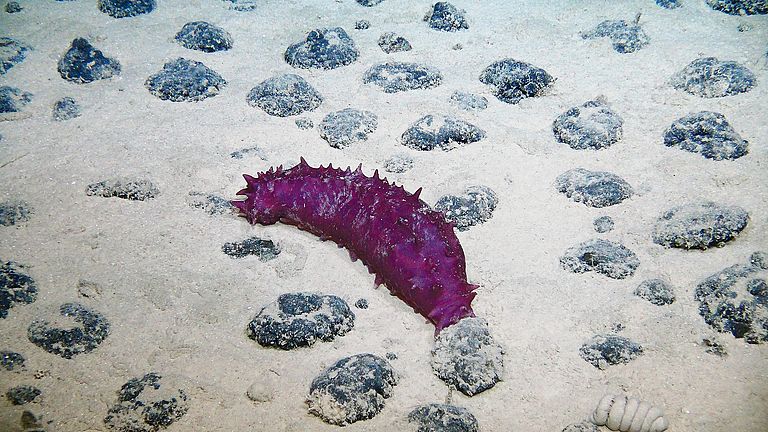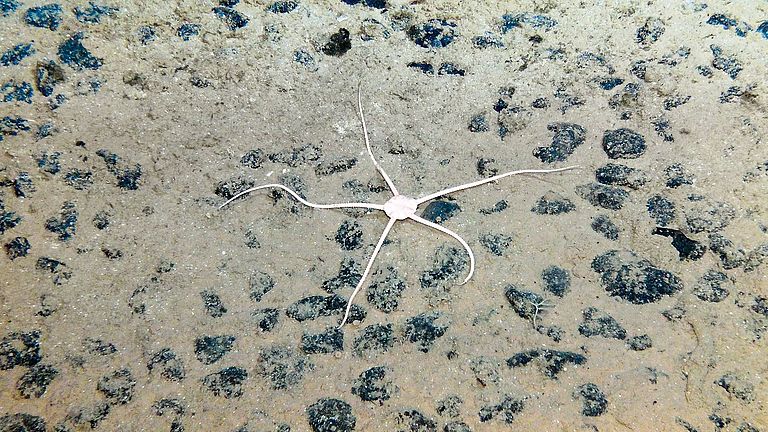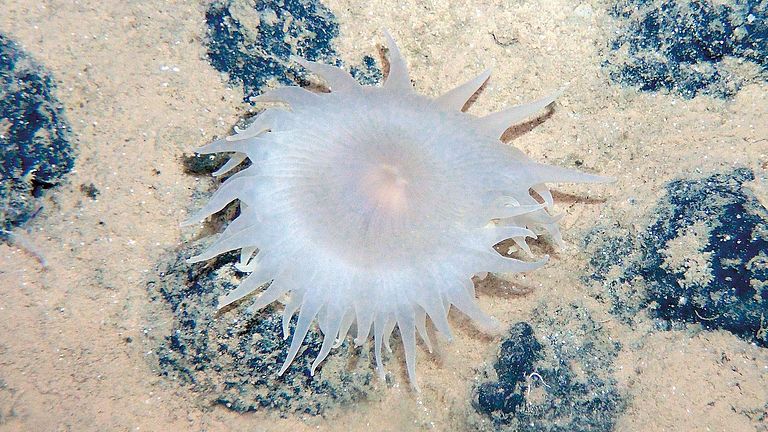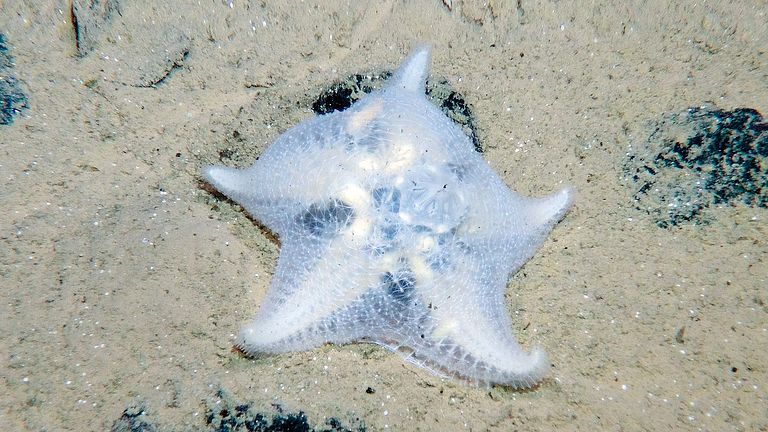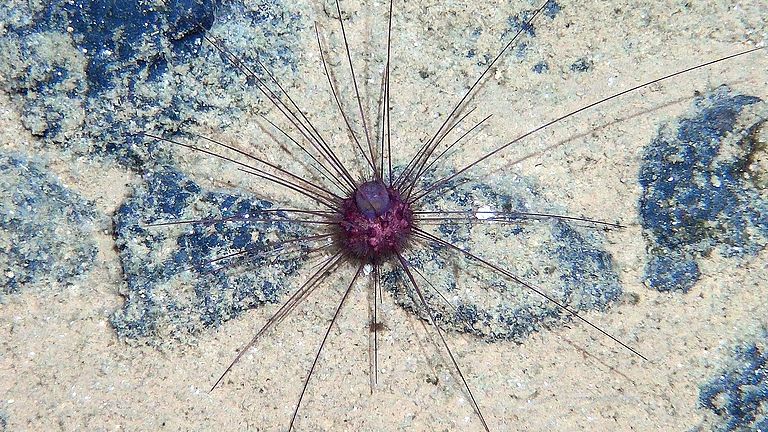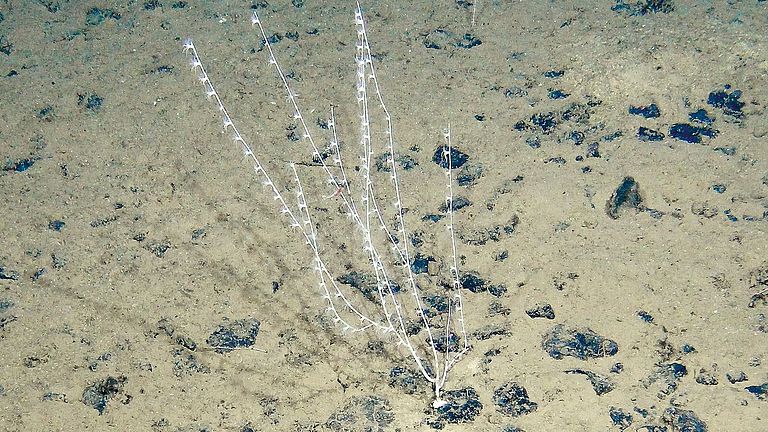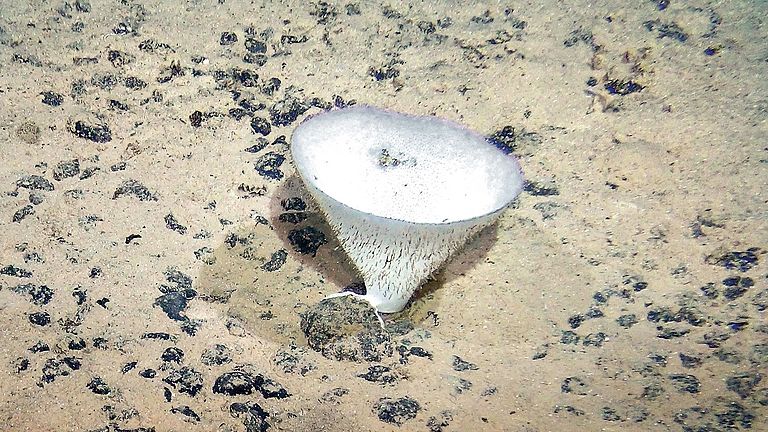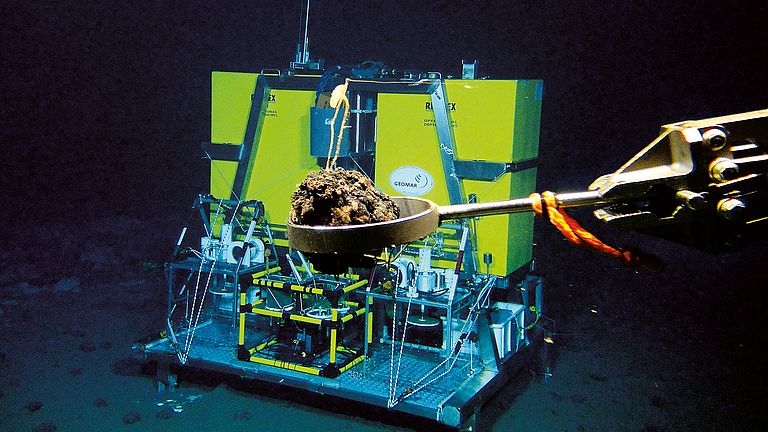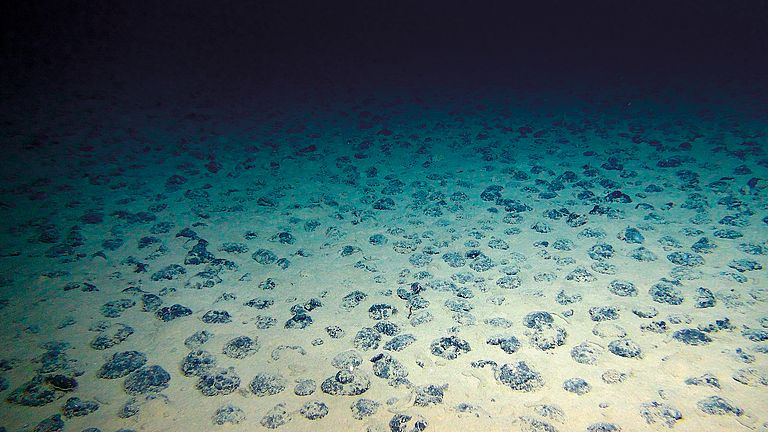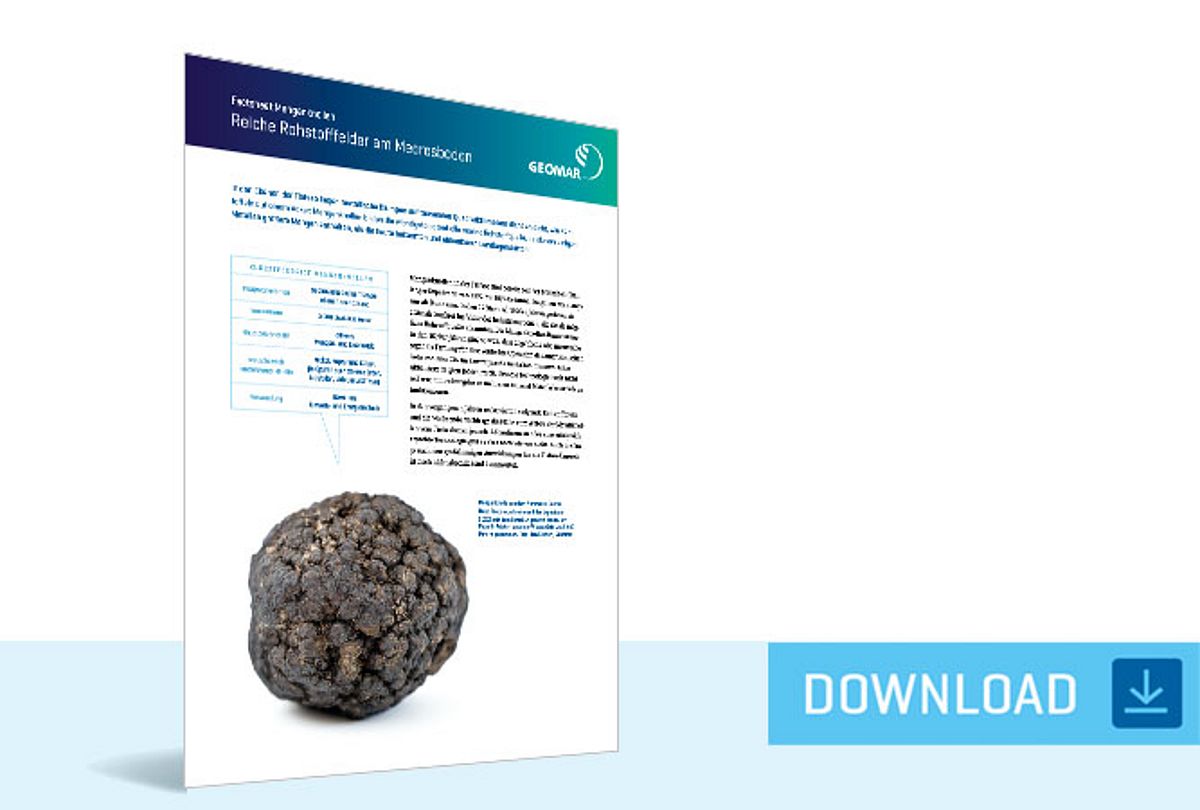GEOMAR Helmholtz Centre for Ocean Research Kiel
Communication and Media
Fon 0431 600-2807
Mail media(at)geomar.de
Biodiversity at Manganese Nodule Fields
In the 19th century it was still believed that life was impossible below a depth of a thousand metres. But even today, the deep sea surprises scientists. The perception that the large deep-sea plains in the central Pacific are uniformly flat and only sparsely populated has persisted until the present day. Another mistake, as researchers from the European MiningImpact project found out: The ecological diversity down there is enormous, especially where many manganese nodules cover the seabed.
Miningimpact - Monitoring of the Environmental Impacts of Deep-Sea Mining
What consequences for the abyssal ecosystem result from mining of metal resources in the deep sea? How can the unavoidable environmental impacts be kept to a minimum? Which environmental standards and threshold values can be defined? And how can compliance with mining regulations be monitored? The international project MiningImpact, coordinated at GEOMAR with researchers from 11 European countries, aims to assess the long-term impacts and environmental risks of deep-sea mining of manganese nodules. In 2015, three expeditions were carried out in the Clarion-Clipperton-Zone (CCZ) and in the DISCOL area in the Peru Basin to investigate the ecosystem’s response to seafloor disturbances after several decades. During another expedition in 2019 technology for the environmental monitoring of deep-sea mining activities developed at the institutes was tested. more ...
Manganese Nodules – Rich Mineral Fields on the Seabed
In the abyssal plains of the deep sea, metallic lumps lie close together over thousands of square kilometers, like potatoes in a field: manganese nodules occur on ocean floors worldwide at depths of 3,000 to 6,000 meters. They consist of metals that are carried into the sea by erosion or originate from hydrothermal vents in volcanically active areas of the oceans. Their growth rate is a few millimeters in a million years, so larger nodules, 15 centimeters in size, can be as old as 15 million years.
In the 1960s and 1970s, they first came under the concrete attention of industrialized nations, which recognized them as a possible source of raw materials. In recent years, however, rising commodity prices and growing demand reactivated plans to mine the metal nodules from the deep seabed. more ...


